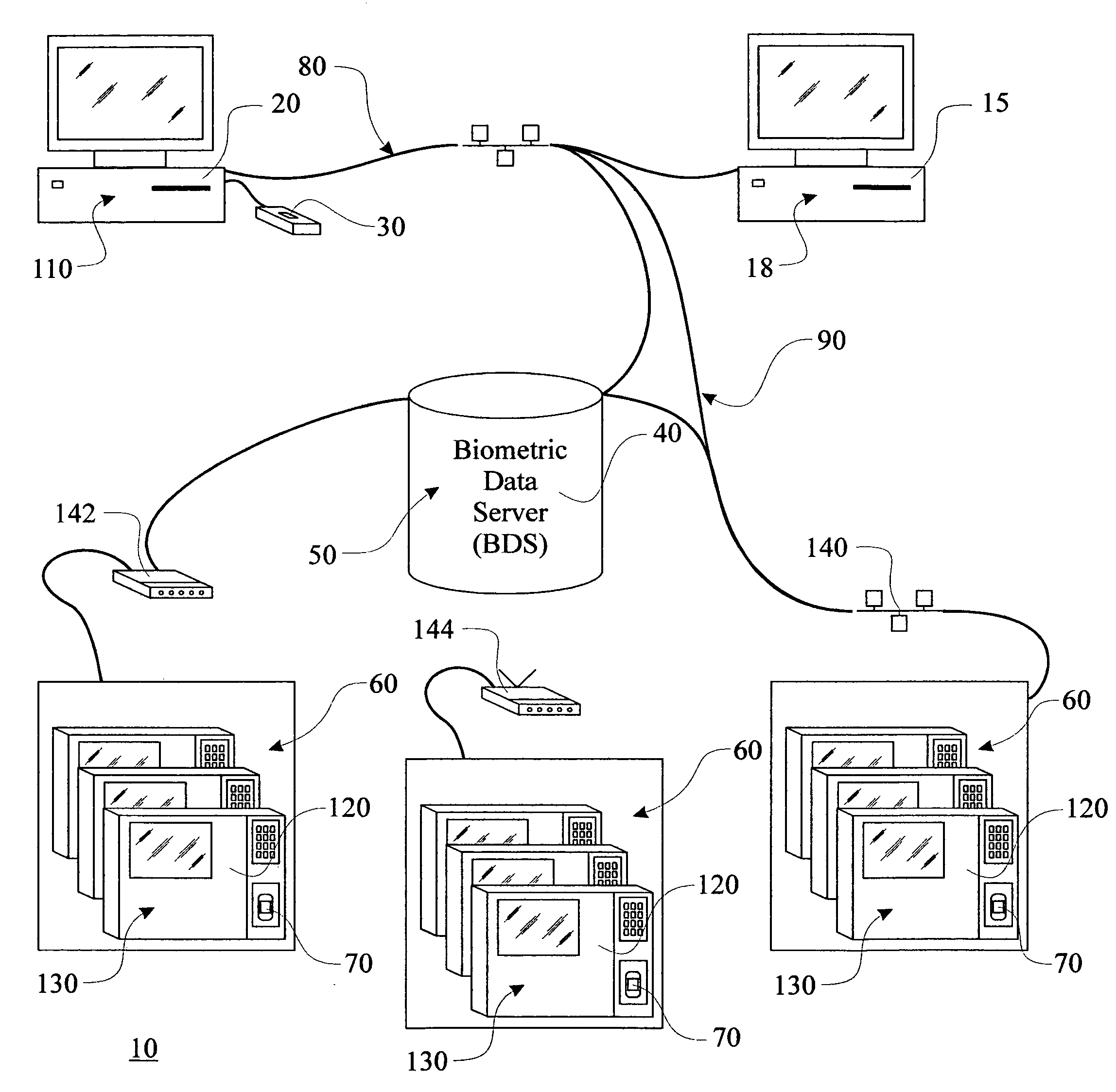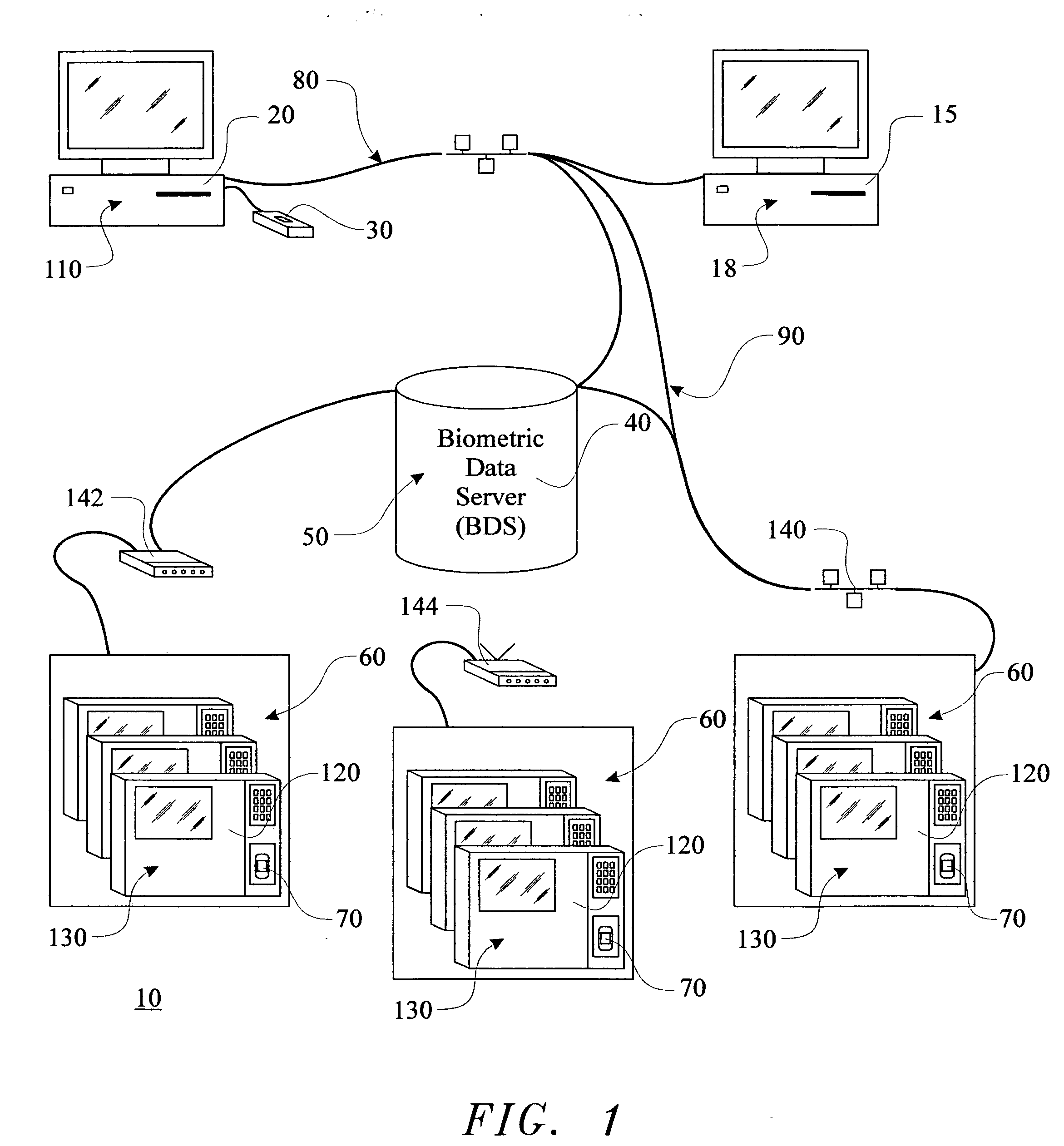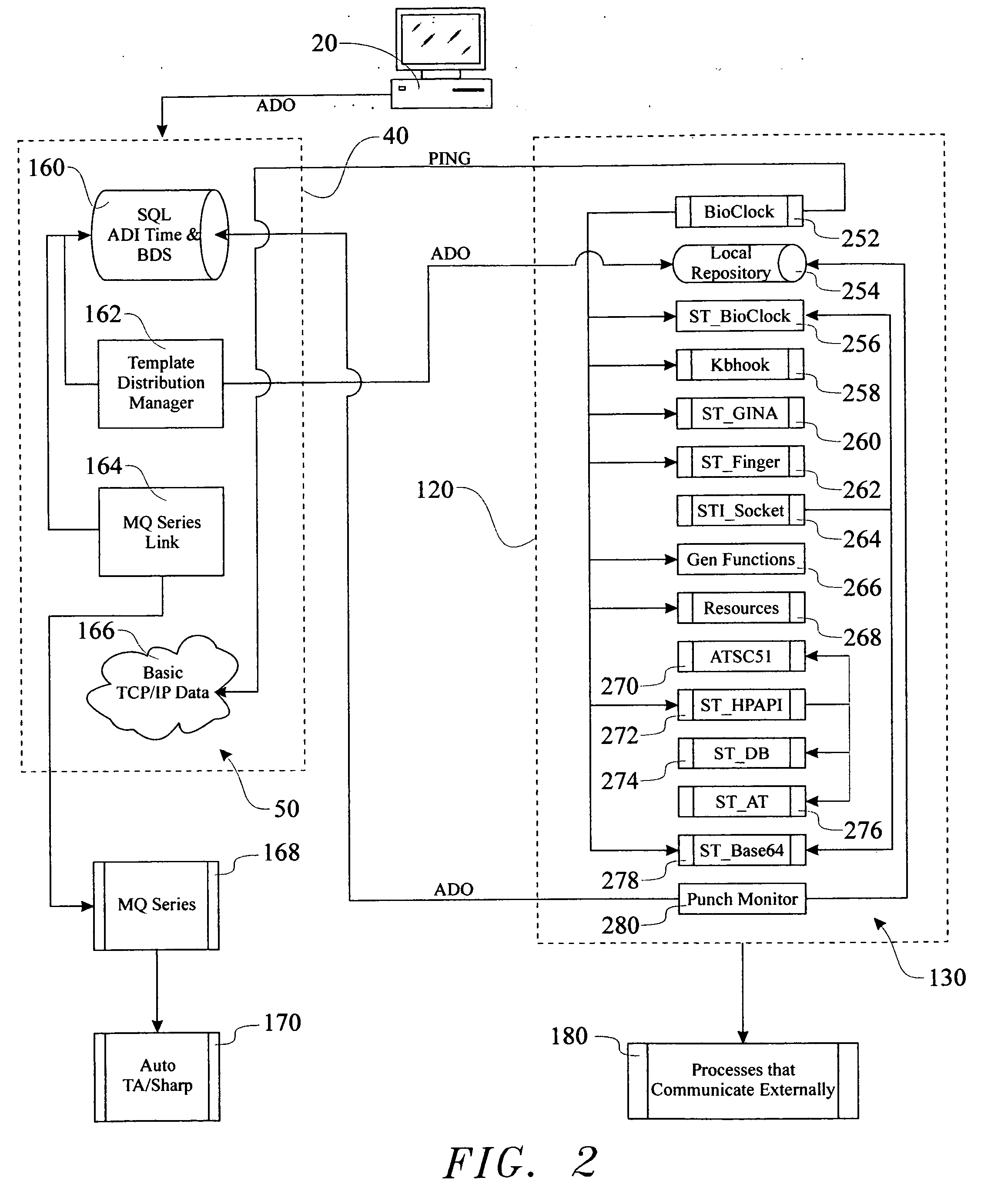Method and apparatus for biometric template data management
a biometric template and data management technology, applied in the field of biometric template data management, can solve the problems of increasing the cost of the unit, compromising the performance of the biometric scanning device, and specific system types, so as to reduce the storage and computing requirements of the server and reduce the time between the central server and the individual units
- Summary
- Abstract
- Description
- Claims
- Application Information
AI Technical Summary
Benefits of technology
Problems solved by technology
Method used
Image
Examples
Embodiment Construction
[0037] Shown throughout the figures, the present invention is directed towards a Biometric Authentication System 10. The system includes at least one of a an administration workstation 15, a Registration Station 20, a Biometric Sensor 30, a Biometric Distribution Server (BDS) 40, Template Distribution Manager Software 50 and a Collection Device 60 having a Collection Device Biometric Sensor 70. For purposes of this detailed description, and not in anyway as a limiting factor to this disclosure, employee will be used interchangeably with any system user.
[0038] Referring now primarily to FIGS. 1, 2, 3, and 4, the first and preferred embodiment of the invention, the Registration Station 20, which is typically a standard desktop personal computer comprising Custom Registration Software 110, has Biometric Sensor 30 electronically attached thereto. Registration Station 20 is connected to the Biometric Distribution Server 40, which is typically server based hardware and database software,...
PUM
 Login to View More
Login to View More Abstract
Description
Claims
Application Information
 Login to View More
Login to View More - R&D
- Intellectual Property
- Life Sciences
- Materials
- Tech Scout
- Unparalleled Data Quality
- Higher Quality Content
- 60% Fewer Hallucinations
Browse by: Latest US Patents, China's latest patents, Technical Efficacy Thesaurus, Application Domain, Technology Topic, Popular Technical Reports.
© 2025 PatSnap. All rights reserved.Legal|Privacy policy|Modern Slavery Act Transparency Statement|Sitemap|About US| Contact US: help@patsnap.com



